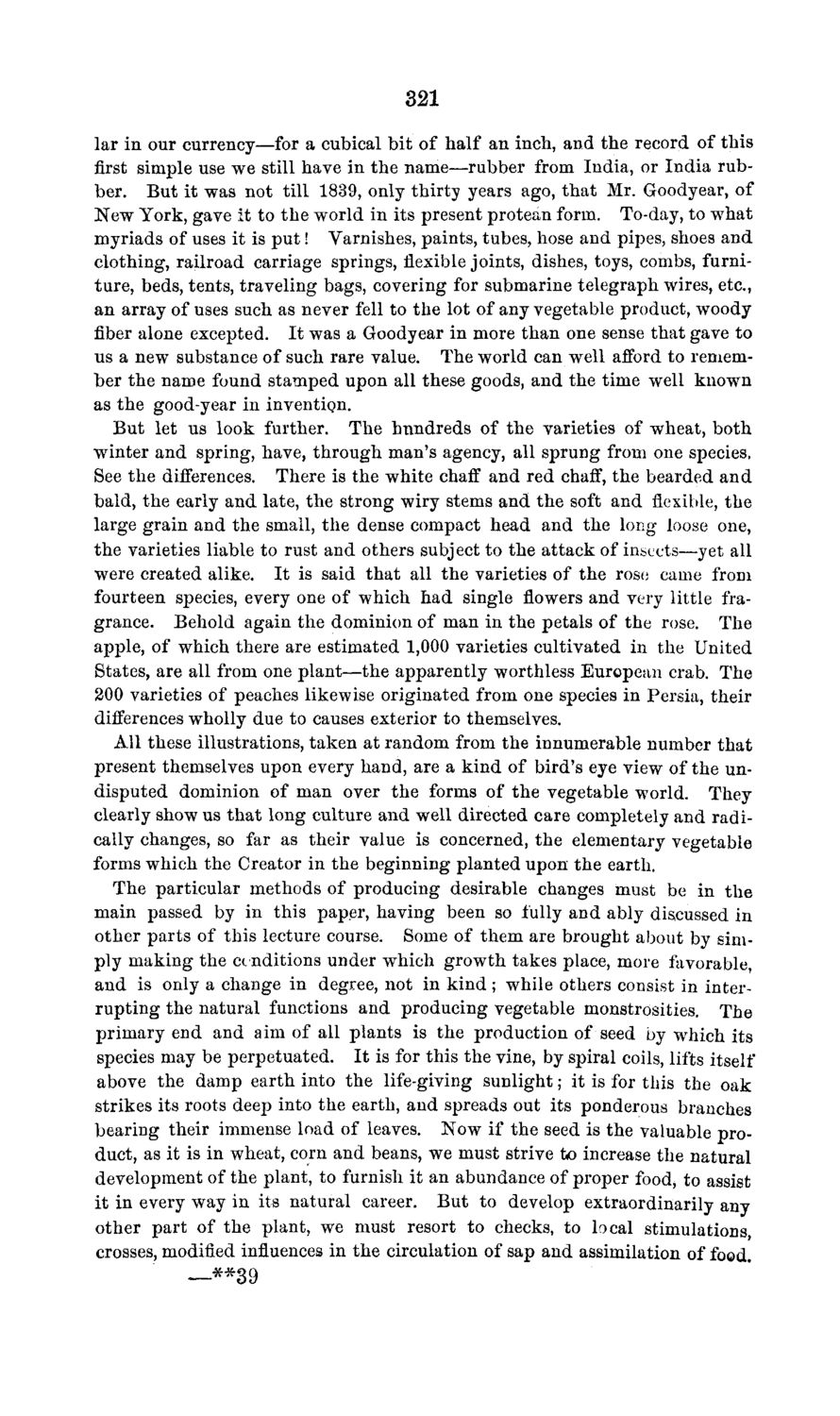| |
| |
Caption: Board of Trustees Minutes - 1869
This is a reduced-resolution page image for fast online browsing.

EXTRACTED TEXT FROM PAGE:
321 lar in our currency—for a cubical bit of half an inch, and the record of this first simple use we still have in the name—rubber from India, or India rubber. But it was not till 1839, only thirty years ago, that Mr. Goodyear, of New York, gave it to the world in its present protean form. To-day, to what myriads of uses it is put! Varnishes, paints, tubes, hose and pipes, shoes and clothing, railroad carriage springs, flexible joints, dishes, toys, combs, furniture, beds, tents, traveling bags, covering for submarine telegraph wires, etc., an array of uses such as never fell to the lot of any vegetable product, woody fiber alone excepted. It was a Goodyear in more than one sense that gave to us a new substance of such rare value. The world can well afford to remember the name found stamped upon all these goods, and the time well known as the good-year in invention. But let us look further. The hundreds of the varieties of wheat, both winter and spring, have, through man's agency, all sprung from one species, See the differences. There is the white chaff and red chaff, the bearded and bald, the early and late, the strong wiry stems and the soft and flexible, the large grain and the small, the dense compact head and the long loose one, the varieties liable to rust and others subject to the attack of insects—yet all were created alike. It is said that all the varieties of the rose came from fourteen species, every one of which had single flowers and very little fragrance. Behold again the dominion of man in the petals of the rose. The apple, of which there are estimated 1,000 varieties cultivated in the United States, are all from one plant—the apparently worthless European crab. The 200 varieties of peaches likewise originated from one species in Persia, their differences wholly due to causes exterior to themselves. All these illustrations, taken at random from the innumerable number that present themselves upon every hand, are a kind of bird's eye view of the undisputed dominion of man over the forms of the vegetable world. They clearly show us that long culture and well directed care completely and radically changes, so far as their value is concerned, the elementary vegetable forms which the Creator in the beginning planted upon the earth. The particular methods of producing desirable changes must be in the main passed by in this paper, having been so fully and ably discussed in other parts of this lecture course. Some of them are brought about by simply making the conditions under which growth takes place, more favorable, and is only a change in degree, not in kind; while others consist in interrupting the natural functions and producing vegetable monstrosities. The primary end and aim of all plants is the production of seed by which its species may be perpetuated. It is for this the vine, by spiral coils, lifts itself above the damp earth into the life-giving sunlight; it is for this the oak strikes its roots deep into the earth, and spreads out its ponderous branches bearing their immense load of leaves. Now if the seed is the valuable product, as it is in wheat, corn and beans, we must strive to increase the natural development of the plant, to furnish it an abundance of proper food, to assist it in every way in its natural career. But to develop extraordinarily any other part of the plant, we must resort to checks, to local stimulations crosses, modified influences in the circulation of sap and assimilation of food. _ ##39
| |